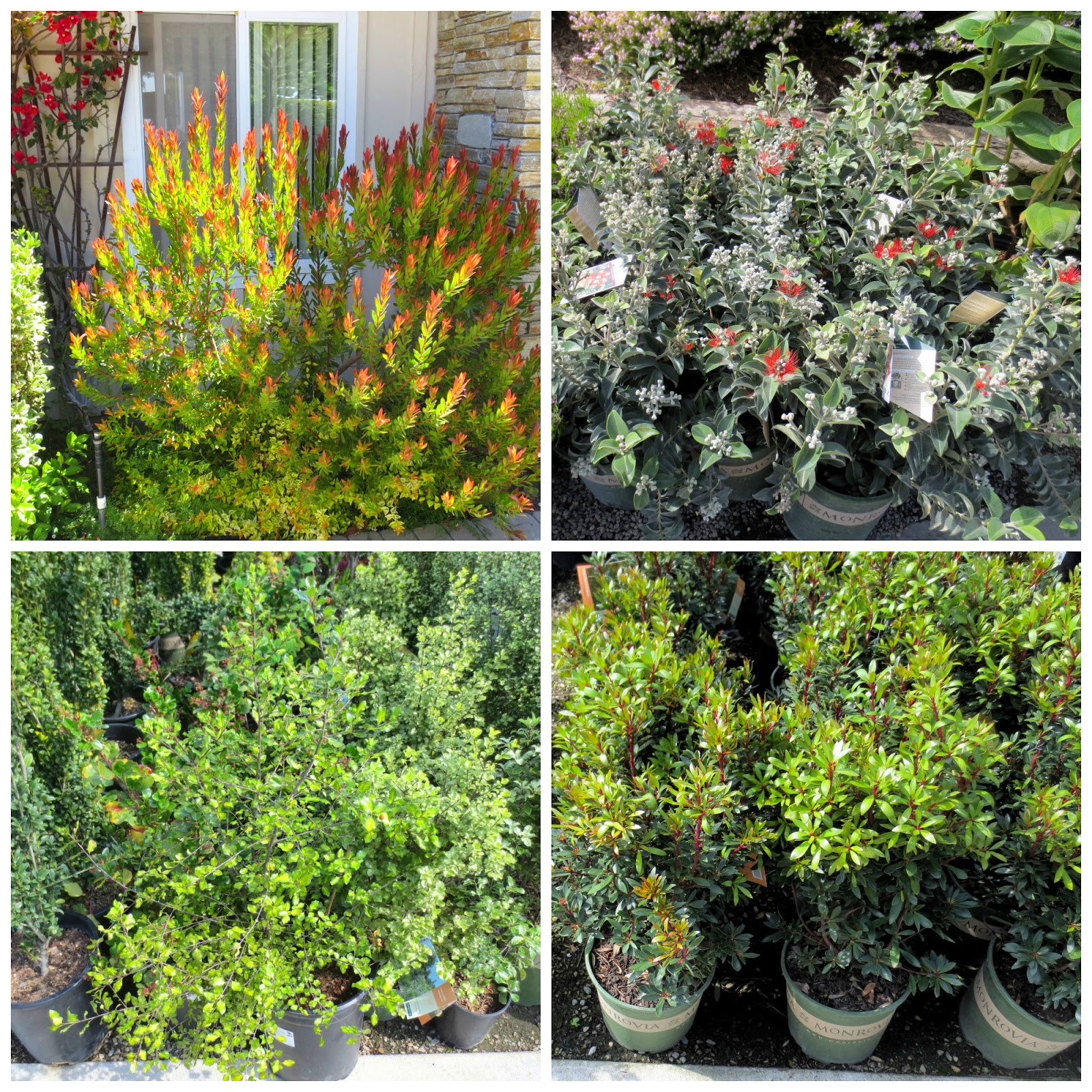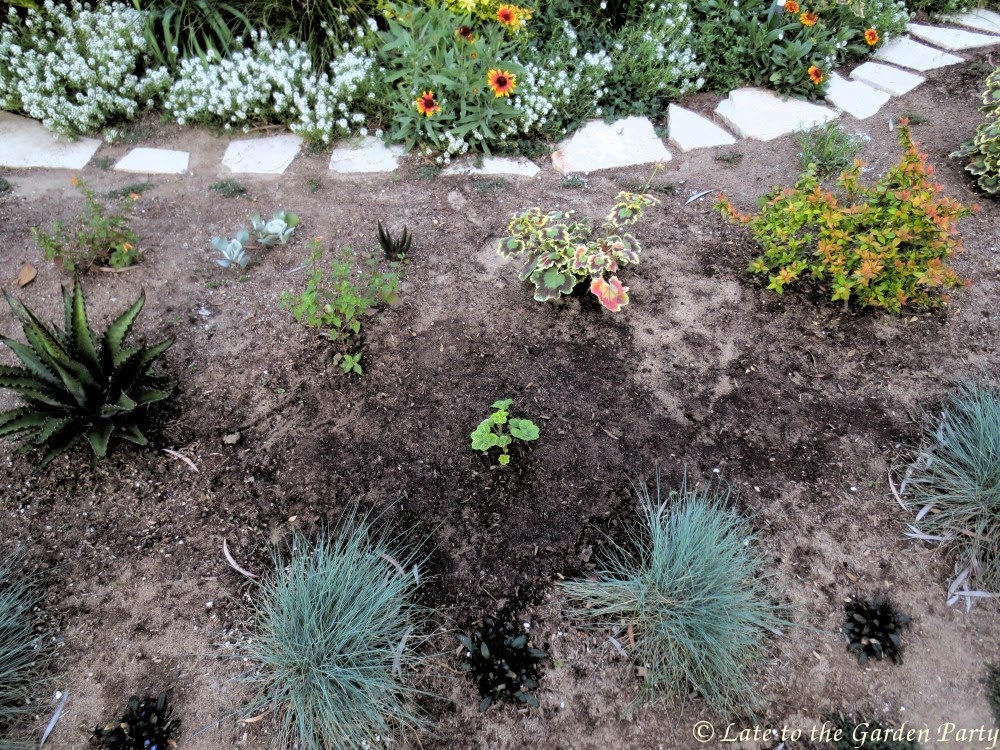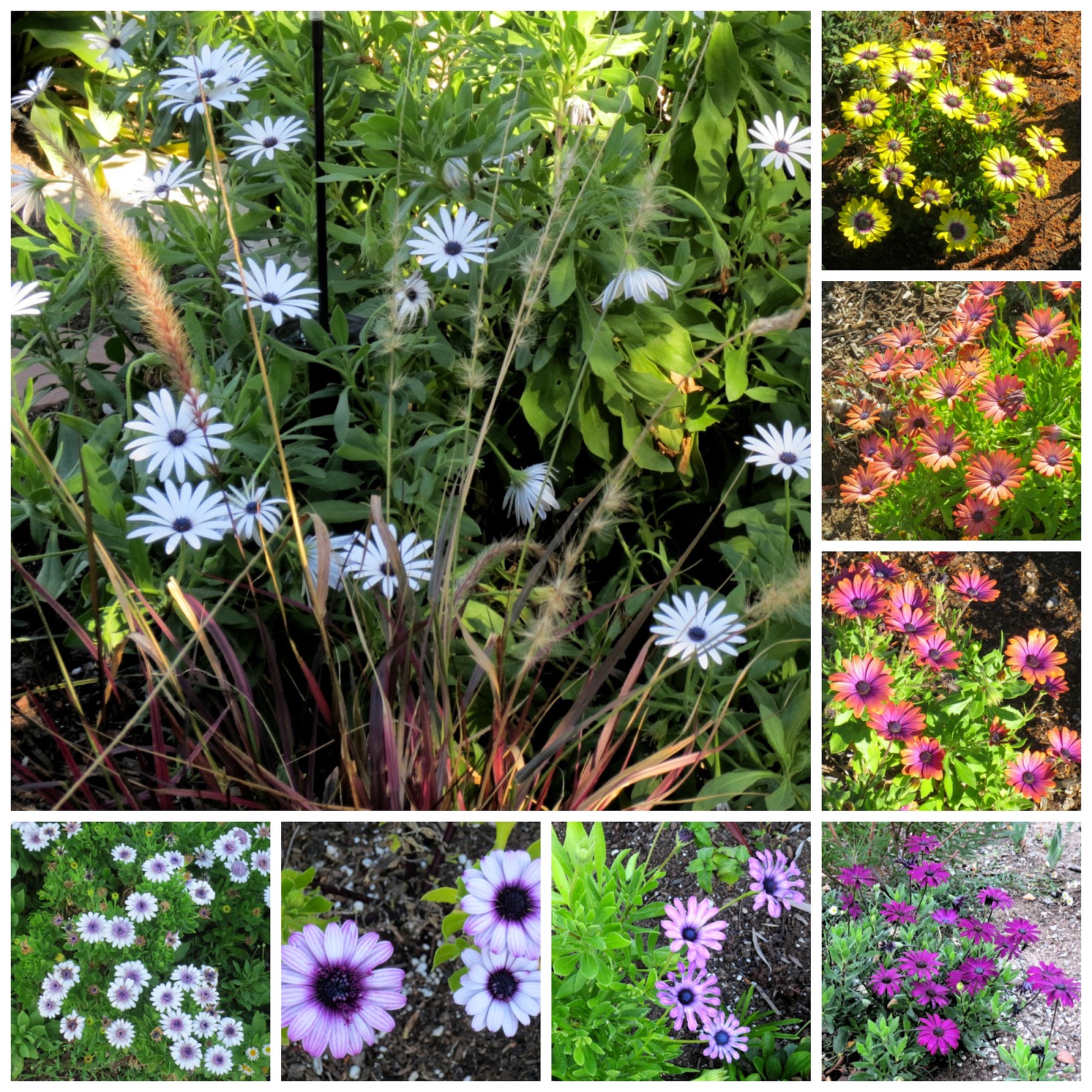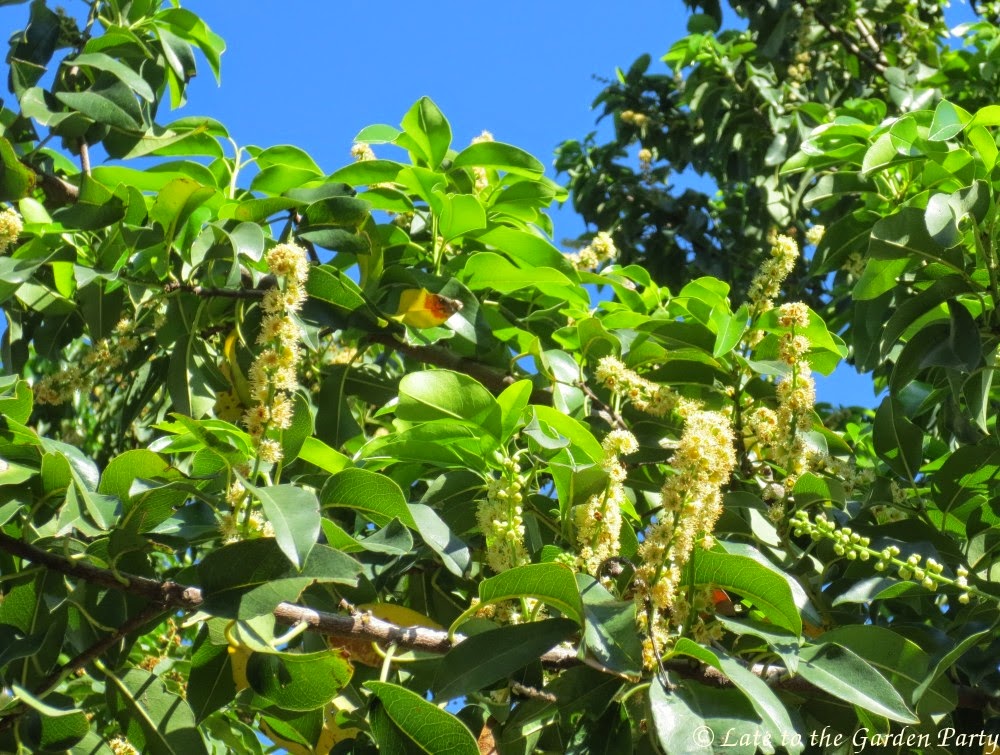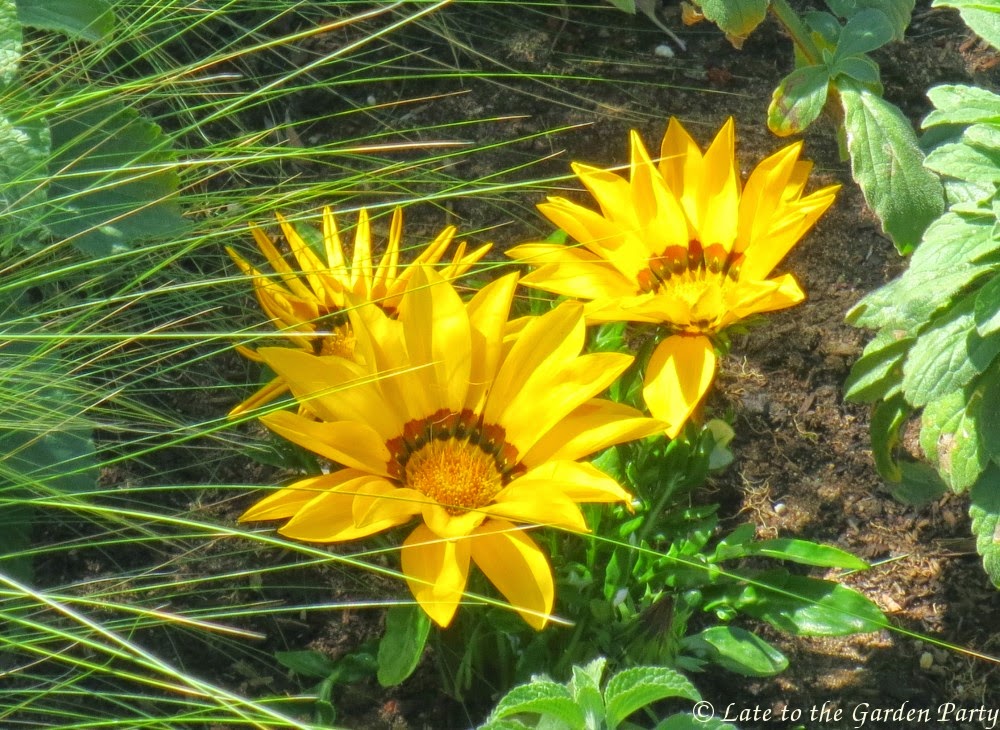Two friends and I made a trip to Roger's Gardens last Saturday. Two very different displays caught my attention near the entrance.
The first was the installation of a new succulent display garden. It's another indication of Roger's commitment to a California-friendly plant palette. The bed was too large to photograph in one wide shot (at least in the presence of customer traffic) so I took multiple shots walking around the circular space.
What's your reaction to the layout? Although I generally prefer naturalistic plant arrangements, I liked the circular and paisley patterns in this bed. I also liked the use of rocks of varying size, combined in places with smaller gravel. Although the display is made up of good-sized specimens, I admit that it probably isn't sustainable in the long-term as some of those succulents will get larger still in time but my guess is that it's not meant to remain in place more than 6 months at most.
The other display was a daffodil exhibition. I love daffodils, in part because most come in my favorite color, yellow, but also because they're an emblem of spring. I don't have much of a collection myself and I'm not well-versed in their culture but it was fun to have a look at the range of variation among them.
Surprising myself as much as my friends, I didn't buy much on this trip. Anticipating the pending upheaval associated with taking out a tree in the backyard and cutting back 9 other trees in response to a neighbor's complaint about my garden's obstruction of her view (as previously discussed here), I've felt frozen in place with respect to work in my garden. Hopefully, after the work is complete on March 7th, I'll be able to refocus on my own plans for the garden.
All material © 2012-2015 by Kris Peterson for Late to the Garden Party
The first was the installation of a new succulent display garden. It's another indication of Roger's commitment to a California-friendly plant palette. The bed was too large to photograph in one wide shot (at least in the presence of customer traffic) so I took multiple shots walking around the circular space.
What's your reaction to the layout? Although I generally prefer naturalistic plant arrangements, I liked the circular and paisley patterns in this bed. I also liked the use of rocks of varying size, combined in places with smaller gravel. Although the display is made up of good-sized specimens, I admit that it probably isn't sustainable in the long-term as some of those succulents will get larger still in time but my guess is that it's not meant to remain in place more than 6 months at most.
The other display was a daffodil exhibition. I love daffodils, in part because most come in my favorite color, yellow, but also because they're an emblem of spring. I don't have much of a collection myself and I'm not well-versed in their culture but it was fun to have a look at the range of variation among them.
 |
| Some of my favorites, clockwise from the left (assuming that I got the names right): 'Karigal', 'Pacific Rim', 'Falstaff', 'Early Dawn', 'Innovator', 'Butter n' Eggs', and Pima |
Surprising myself as much as my friends, I didn't buy much on this trip. Anticipating the pending upheaval associated with taking out a tree in the backyard and cutting back 9 other trees in response to a neighbor's complaint about my garden's obstruction of her view (as previously discussed here), I've felt frozen in place with respect to work in my garden. Hopefully, after the work is complete on March 7th, I'll be able to refocus on my own plans for the garden.
All material © 2012-2015 by Kris Peterson for Late to the Garden Party






































































